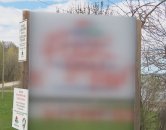Source Feed: City of Ottawa News Releases
Author: City of Ottawa - Media Relations / Ville d'Ottawa - Relations avec les médias
Publication Date: April 15, 2025 - 18:55
Intersections – where the safety of all road users meet
April 15, 2025
Intersections are the most common location for collisions. All road users need to pay attention to ensure the safety of themselves and others.
Feature story
Whether you’re a pedestrian on a sidewalk, or a cyclist or motorist driving along the street, at some point everyone’s paths will cross. It will likely happen at an intersection.
With everything coming together at intersections, it’s important for everyone to pay attention, whether the intersection has stop signs, PXO signs, traffic signals or is a roundabout.
Between 2019 and 2023, 54 per cent of all fatal or major injuries that occurred in Ottawa happened at or near an intersection.
Here are some tips to keep everyone safe when using an intersection.
Motorists
- Do not stop in crosswalks since that forces pedestrians into traffic
- When turning, always check for cyclists, e-scooters and pedestrians, especially on one-way streets; while vehicles can only travel in one direction, pedestrians can travel both ways
- Between 2019 and 2023, 26 per cent of collisions resulting in fatal or major injuries to pedestrians involved a left turn movement
- When making a left turn, watch for motorcycles in the opposing lane – their speed and distance can be hard to judge
- Only proceed through an intersection if the way is clear and you have plenty of time for the turn; don’t rush and watch for pedestrians crossing in the crosswalks.
- Make full stops at stop signs and red lights – no rolling stops
- Be aware of vulnerable road users in your vehicle’s blind spot
- Before proceeding through an intersection, make eye contact with other road users who may not see you
- Sound your horn to alert other road users who may not see you
- Ride defensively, as vehicles can’t always see you well
- Do not stop in crosswalks since that forces pedestrians into traffic
- Make full stops at stop signs and red lights – no rolling stops
- When stopped near a truck, you may be in the driver’s blind spot; assume the driver does not know you are there or move out of the blind spot
- Ride defensively, as vehicles can’t always see you well
- Never stop in crosswalks since that forces pedestrians into traffic
- To cross at a crosswalk or traffic lights, dismount and walk your bike across
- Signal your turns or if you are stopping
- Make full stops at stop signs and red signals– no rolling stops
- When stopped near a truck, you may be in the driver’s blind spot; assume the driver does not know you are there and move out of the blind spot
- Before proceeding through an intersection, make eye contact with other road users who may not see you, especially if they are turning your way; if the car’s windows at tinted you can look at the driver’s location in the car to catch the driver’s attention
- Be visible in lowlight conditions with:
- A white light at the front of the bike
- A red rear light or red rear reflector
- Two strips of white reflective tape on front forks (each strip to be 125 millimetres by 25 millimetres)
- Have a bell or horn on your bike and use it to alert road users near you, though keep in mind drivers may not hear it
- Cross in the marked crosswalk and keep your eyes on the road; don’t look at your phone or be otherwise distracted
- Before proceeding through an intersection, make eye contact with drivers who may not see you, especially if they are turning your way; if the car’s windows at tinted you can look at the driver’s location in the car to catch the driver’s attention
- Learn where a vehicle’s blind spot is and stay out of it
- Make yourself visible at dawn, dusk and after dark by wearing light-coloured clothing or something reflective or carry a small light
- Visit these web pages from the City and the province of Ontario for more safety tips
Premier says she wants to lower separatist sentiment. But her political base's anti-Ottawa mood is becoming an anti-Canada mood.
May 9, 2025 - 14:26 | | CBC News - Canada
A 16-year-old boy is facing mischief charges following the discovery of racist and antisemitic graffiti in various locations throughout Renfrew County earlier this week.
May 9, 2025 - 14:10 | | CBC News - Ottawa
RCMP says the body of a 22-year-old man was located on shore this morning, while the search continues for the other boater, a 41 year-old.
May 9, 2025 - 14:07 | Globalnews Digital | Global News - Canada



Comments
Be the first to comment